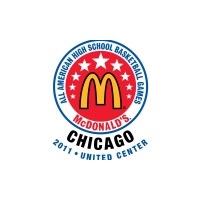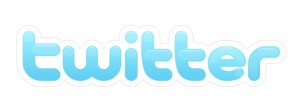It’s really astounding when you think about it- in an era when almost no one is willing to pay for news content, recruiting services can survive and thrive off a subscription-based business model.
The year-round extensive coverage of college recruiting, at every step in the process, has destroyed media coverage of college sports. It’s not just the rise of the recruiting-industrial complex itself that ruined it. Recruiting sites flourished at the same time social media exploded and these two phenomena fed off of each other to concoct a toxic cocktail.
How did we get here?
Why is recruiting such a spectacle now, with everyone overreacting at every opportunity? How many more times do we need to see team records not always correlate with recruiting class ranking and individual performance not match up with how many stars they had after their name coming out of high school?
Let’s take a look at the factors that have contributed to so many people treating recruiting battles like they are matters of life and death.
When Your Entire Site Is Only About One Team, Major Problems Arise
In the past decade or so we’ve seen the explosion of the recruiting-industrial complex, with team focused message boards and news sites that cater to one team and one team only. Some of them do really good business, and many get most of their clicks from recruiting stories, rumors and over-analysis of what should still be regarded as banal these days, but isn’t.
Also, you got to give a lot of credit to some of these site managers- they are at every game, home or road, every practice and every press conference. They do put in the time and effort. However, if you only write about one team all the time, you run out of material pretty fast, and you got to fill space with something, and whatever that something is you overhype it.
Thus, if some kid has a list of his final 10 schools he’s considering, and the school you cover is on that list- OMG!!!! HUGE NEWS!!!!
“I think there is a lot of trading in un truth in journalism about college sports,” said Jonathan Hock, creator of several 30 for 30s, including the John Calipari film One and Not Done.
“I think there is a lot of factionalizing of the media- you’re either in the Pitino camp or the Calipari camp. You’re either in the Harbaugh camp or the anti-Harbaugh camp. Urban Meyer, Nick Saban, you name it- there are those on that side and those that aren’t.
“You really have to take everything with a grain of salt as to whose side who’s on when you’re reading things.”
This is Extremely Unhealthy for the Kids
Social media amplifies everything, even the most mundane of minutia, so we can start there. You can’t help but get a big head if you have online acolytes at every turn. When you have media outlets writing you up as the second coming, and social media hangers-on fawning all over you, despite not having actually accomplished much yet…Of course, these kids are going to see their egos swell from it.
You have to remember now, we’re pretty deep into the participation trophies generation now. It’s not like how it was for Gen Xers, if you sucked in little league, they batted you near the bottom of the order and stuck you out in right field, where no one ever hit the ball, and you only got a few innings at that. From millennials and generation Z onward, everybody in every youth sport was deemed a special, wonderful snowflake.
So imagine what happens when a recruit reads endless praise. Whenever anyone in sports tells you they don’t read what is written about them, it is total crap. It’s complete b.s. especially so in the era of social media where every link gets tweeted to them multiple times. If they themselves don’t search it out (and many do), their friends and family do for them.
This is Not Healthy for the Grown Adults
No adult needs to ever care that much about where a high schooler has decided to attend college. Period.
Of course, in this contemporary strain of American capitalism, it is mandated that every single quark of any level of interest in anything must be marketed and monetized. (Meanwhile college athletes themselves still aren’t allowed to get paid).
After setting up shop in Chicago for most of the decade, the McDonald’s All-American Game left in 2018, and good riddance. The last one that I covered I had the opportunity to witness numerous credentialed members of the media (I can’t refer to them as journalists) taking selfies with the players. Yes, so-called adult reporters, constantly trying to get their photos taken with high school basketball players.
It’s really laughable, and now is the time for a reality check. This is what happens when everybody wants to do a college announcement hat picking ceremony, and many of them get a reality TV special.
Also, never tweet at recruits; ever. Even if it’s praise, this is not negotiable.
Additionally, never buy in to the misguided and goofy idea that no recruit should be “criticized,” as it’s just “grown-ups” bullying “kids.” No, it doesn’t work that way, if you are a public figure, you are open to fair, deserved criticism. If you enter public sphere, you will be criticized. If you don’t like it, pick a profession/activity that is much less publicly visible.
It’s Destroyed the Process Itself
These days offers are meaningless and verbal (especially “solid verbal”) commitments are almost as meaningless. Even signing a letter of intent can be less than meaningful, because they are not that hard to get released from these days. Not to mention everybody seems to be transferring these days too. It’s a lot to keep up with, and it can all be quite fatiguing, and thus discourages interest in the games.
And you get to see hackneyed boilerplate like this over and over again:
“After taking time to think things over, and consulting with my family, I’ve decided not to enroll at school XYZ. I thank Coach ABC, his staff and the fans of team 123 for all the love and support, but I have to do what is best for me and my future plans. Please respect my privacy. #blessed”
If they were actually being honest, they should also add “respect my privacy, but also read and share all my tweets that are all about me.”
How it Used to Be
It was all much better in the days before the recruiting-industrial complex and social media. Yes, there was coverage, but it wasn’t much more than signing letters of intent. Only friends and family knew what schools had offered, and nobody cared to keep tabs on numbers of offers.
It was much better in those days. Borrowing the catch-phrase of Dana Carvey’s famous Grumpy Old Man character- “that’s the way it was and we LIKED IT!”
I just can’t get into recruiting. Let’s see what happens when you actually get to campus, and until then I don’t care. Let’s stop getting too high and too low too fast from it all. Let’s see how these guys actually play for a bit, and how they do when they’re coached up. Yes, I am aware that the material commonly presented in the recruiting-industrial complex is what moves the needle, and I swim against this current at my own peril.
Yet I remain steadfast in this belief. To paraphrase President Dwight D. Eisenhower’s farewell address from the White House:
In the councils of college sports media coverage, we must guard against the domination, whether sought or unsought, by the recruiting–industrial complex.
Paul M. Banks runs The Sports Bank.net and TheBank.News, which is partnered with News Now. Banks, a former writer for NBC Chicago.com and Chicago Tribune.com, is currently a regular contributor to SB Nation, WGN CLTV and Chicago Now.
Follow him on Twitter, Instagram, Sound Cloud and YouTube. The content of his cat’s Instagram account is unquestionably superior to any and all of his.







